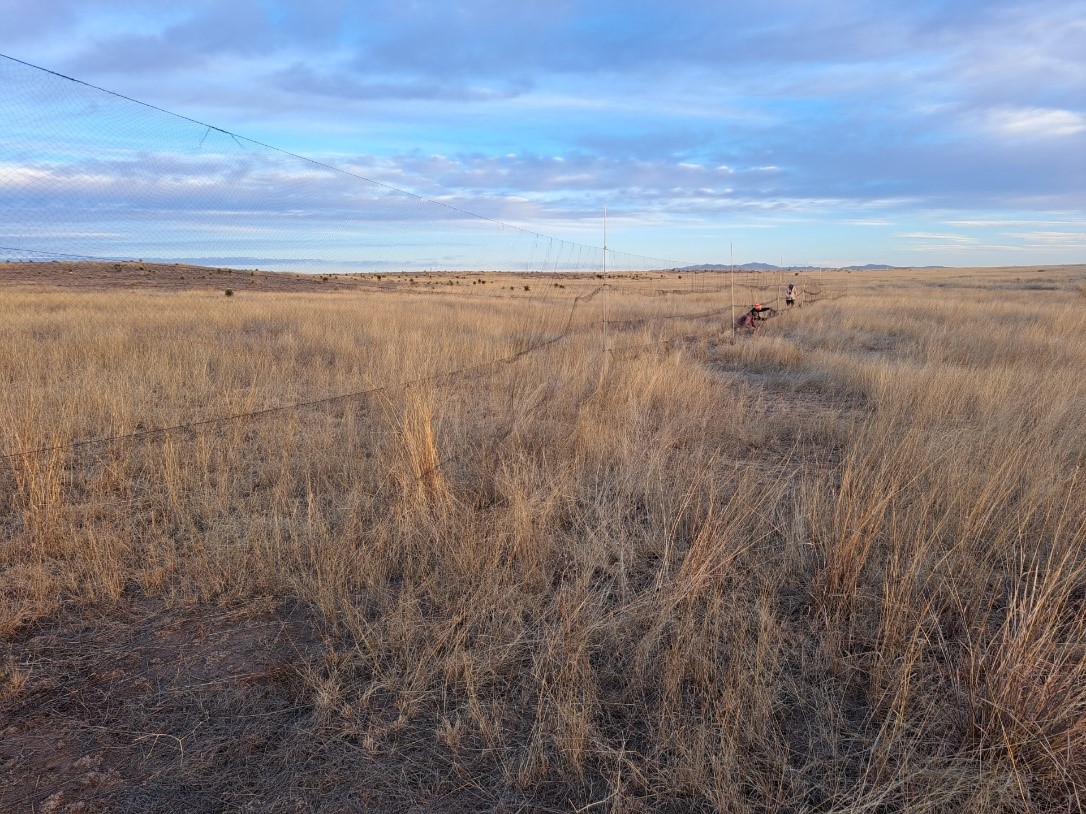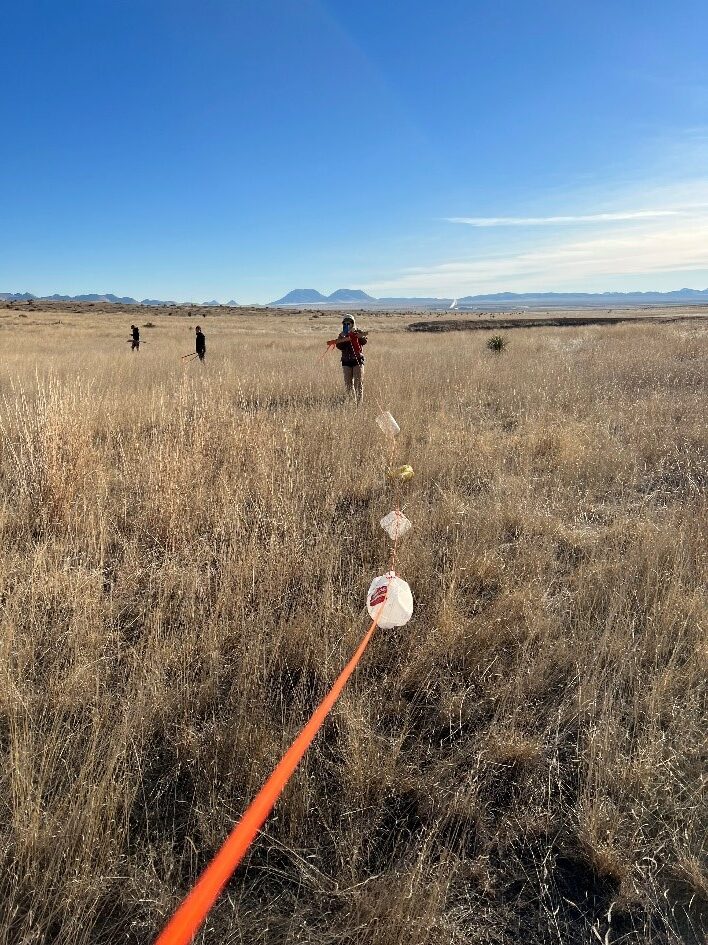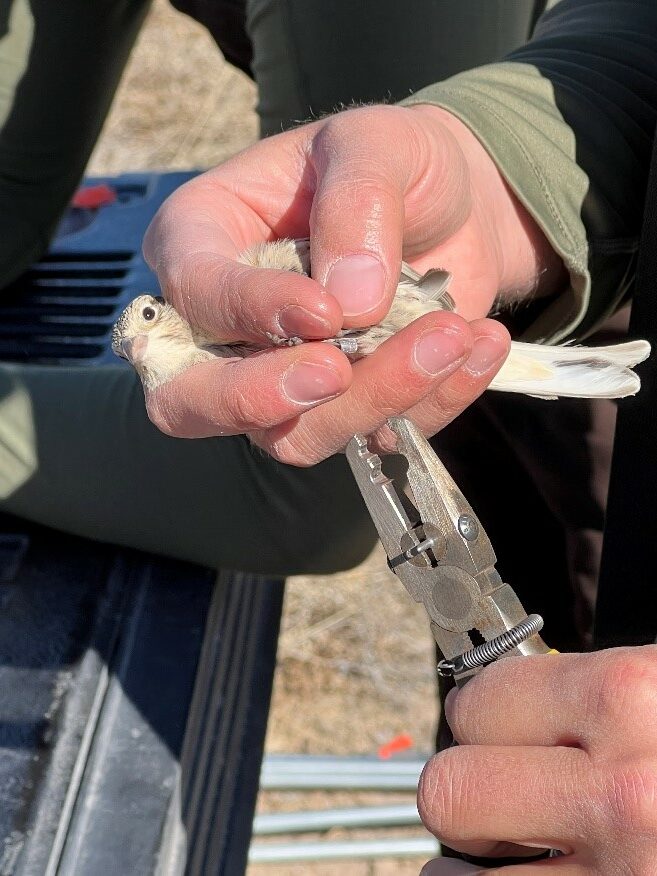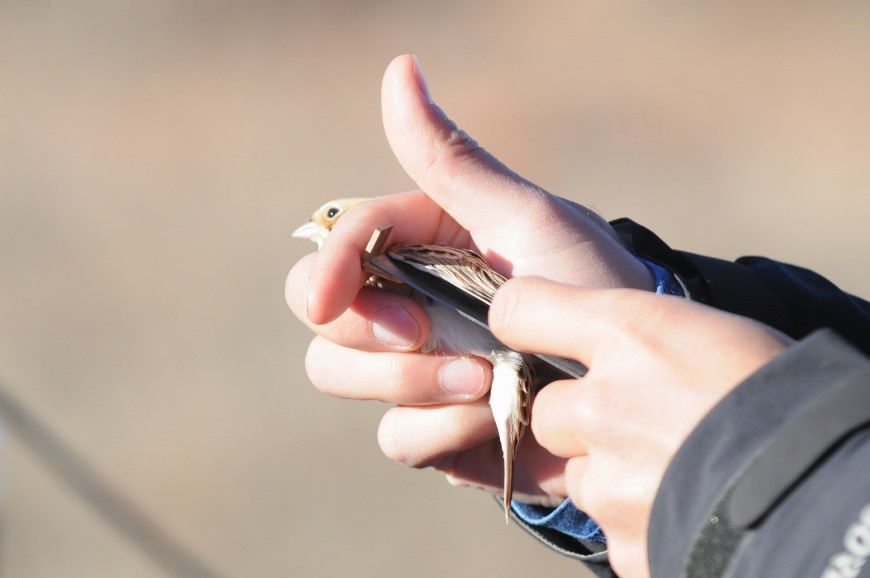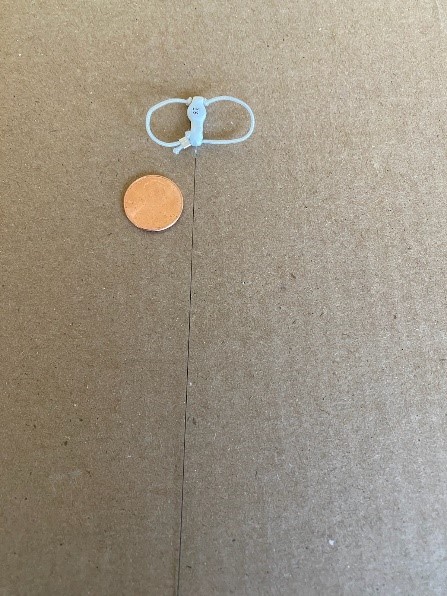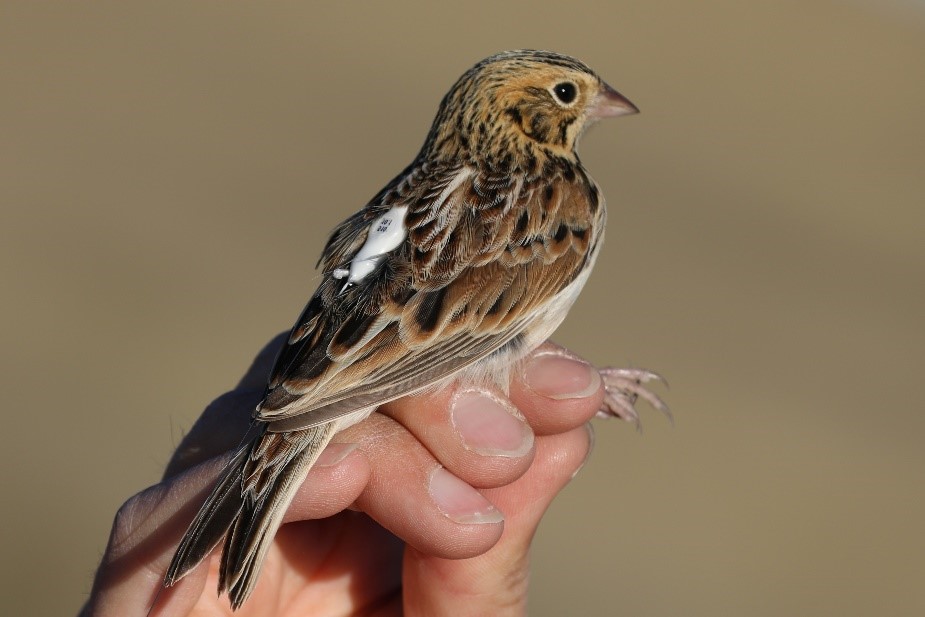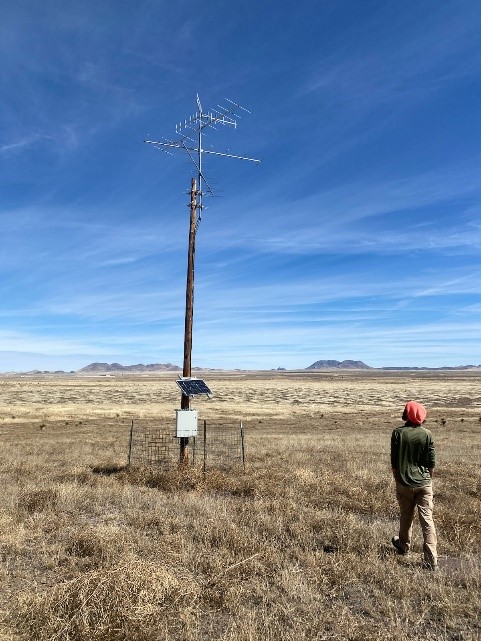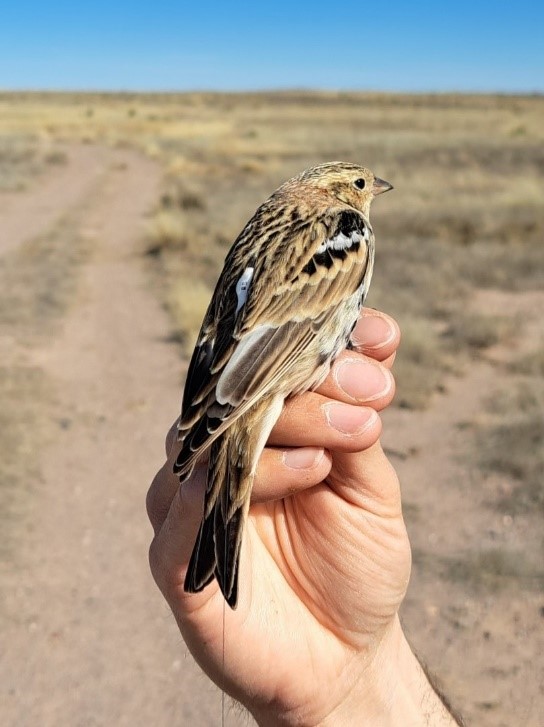Until recently, the winter-time behaviors and habitat preferences of grassland birds have been poorly understood and understudied in comparison to their breeding-grounds. For the past few winters, Bird Conservancy of the Rockies has begun to unravel this mystery with regimented winter monitoring surveys in the Chihuahuan Desert ecoregion, in cooperation with Texas Parks and Wildlife Department, the National Fish and Wildlife Foundation and the Borderlands Research Institute at Sul Ross State University. The Chihuahuan Desert covers much of north-central Mexico, southern New Mexico, and far west Texas and, despite its ‘desert’ name, is comprised of vast areas of grasslands. For the past two months, Bird Conservancy bird banders Josh Lefever and Julie Shieldcastle have been conducting a pilot project to help us better understand the movements of grassland birds wintering in west Texas.
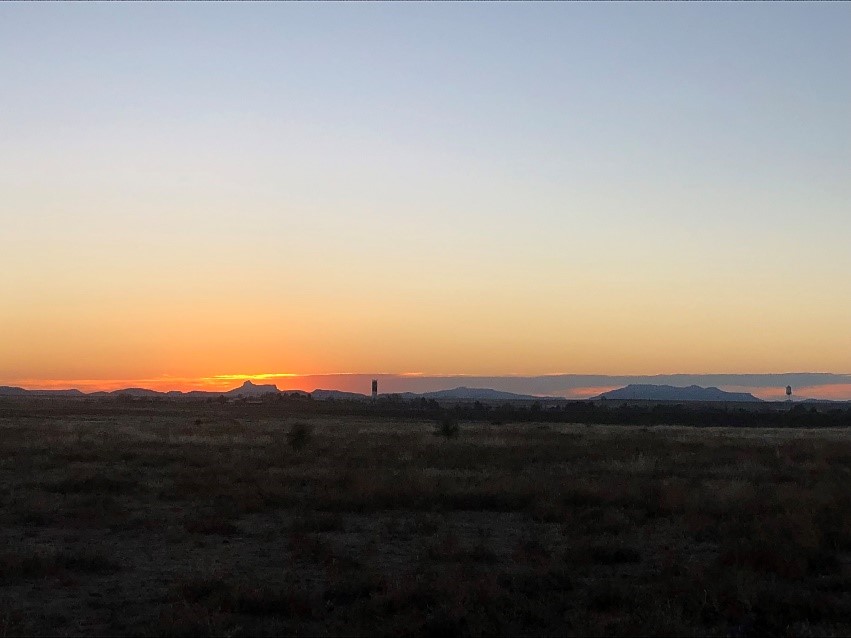
Sunrise at Mimms Ranch. Photo by Josh Lefever
Bird Conservancy has identified four grassland species of conservation concern: Baird’s Sparrow, Sprague’s Pipit, Chestnut-collared Longspur, and Thick-billed Longspur. These species all breed in the northern Great Plains, spend their winters in the Chihuahuan Desert, and have suffered steep population declines over the past few decades. In order to address the declines of grassland birds, Bird Conservancy has been contributing to the Motus Wildlife Tracking System by installing stations and tagging birds throughout the Great Plains and Chihuahuan Desert. The data collected is available to the public. You can view our project here.
This winter, Josh and Julie have been target capturing the four focal species with fine mesh nets called Mist Nets. The birds are then measured and fitted with a uniquely numbered aluminum leg band and a radio transmitter tag that rests on their back. Once picked up by Motus stations, these tags will help us understand the bird’s movements throughout their annual cycle, both on the wintering grounds and as they fly back north to their breeding grounds.
- Mist Nets lined up in the Grassland. Photo by Tom Forwood Jr.
- Volunteers in formation to ‘Round-Up’ the birds. Rope with empty jugs attached is used to flush birds that may try to sneak between people walking. Photo by Barbara Pankratz
Mimms Ranch, a unit of the Dixon Water Foundation in Marfa, Texas, is the primary grassland bird capture location. The Ranch encompasses over 13,000 acres of well managed grassland. Since this area is quite large, we have also partnered with the nearby Sul Ross State University and local birders to assist in the capture of the target species. Volunteers arrive before dawn to start the bird round up. It is truly a “roundup” trying to herd a bird or two into a line of mist nets with a group of people. We greatly appreciate these volunteers’ time and efforts to assist with this project. Without them, our capture rate would be much lower.
Once a target bird has been captured and safely extracted from the mist net, it is carried back to the truck for processing. Banding, aging, sexing, and morphometric measurements are taken on the bird before it is fitted with its backpack Motus Tag. The harness is fitted around the upper thighs of the bird and the tag sits on the bird’s back. After the bird receives its Motus tag, then it is checked over a final time before being released unharmed.
- A Chestnut-collared Longspur receiving an aluminum leg band. Photo by Barbara Pankratz
- Measuring the wing of a Baird’s Sparrow. Photo by Naomi Himley
Every Motus tag is programmed with a unique pulse identifier, which can be detected by any Motus station, and it works for about a year (though some tags can last much longer). Anytime the bird flies within roughly 12 miles of a station, its identifier is recorded and wirelessly sent to a centralized database server. A Motus station is located on Mimms Ranch and many more are situated to the north, along the front range of the Rockies and all across the Great Plains. Multiple tag detections will create a map for each bird, providing invaluable insights to the migratory route, movement behaviors, and possibly the habitats these birds utilize during their annual cycle.
- A radio tag used for MOTUS station detections. The 2 loops are delicately put around the bird’s legs, with the transmitter resting on the bird’s back. Photo by Julie Shieldcastle
- Baird’s Sparrow equipped with a radio tag. Photo by Will Britton
Research usually poses more questions than answers. With this winter grassland Motus project, Bird Conservancy hopes to answer some questions about the birds’ movements to assist in future bird and land/habitat conservation efforts in the years to come.
- The MOTUS station at Mimms Ranch. Photo by Julie Shiledcastle
- Chestnut-collard Longspur equipped with a radio tag. Photo by Tom Forwood Jr.
UPDATE: While mist-netting on a private ranch near Fort Davis, TX during the week this blog was published, the banding crew caught a very unexpected grassland sparrow- A LeConte’s Sparrow! Typically found wintering in wet grasslands in east Texas, this bird is only the 6th to be documented in Far West Texas and the first in Jeff Davis County. While very similar to a Baird’s Sparrow, this equally beautiful bird is a bit smaller in size, has a bold gray cheek patch, more streaking on its sides, and a pale stripe across the top of its head. We’re very grateful to the landowners for allowing us to work on their property, and hopefully this project can continue to identify and help manage healthy grasslands that support a wide-range of birds, even the ones we’re not always expecting to find!
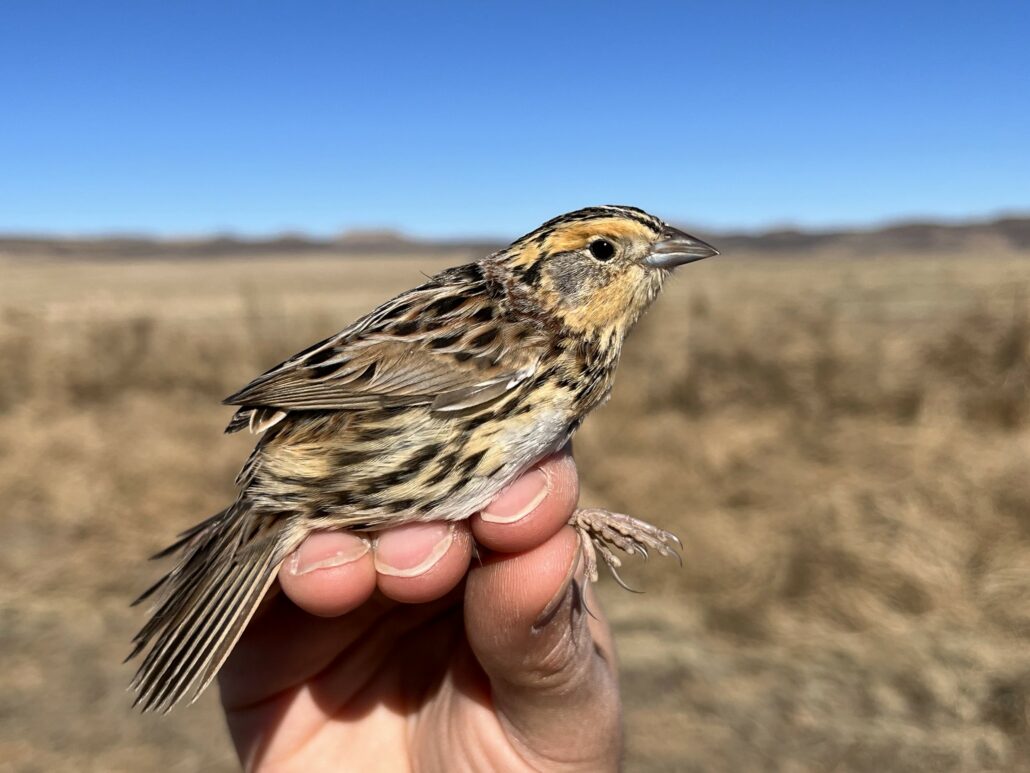
The first LeConte’s Sparrow to be documented in Jeff Davis County in Far West Texas. Photo by Josh Lefever
Funding for this Winter Sparrow Motus Tagging project was provided by a Spirit of Conservation grant through National Fish and Wildlife Foundation (NFWF), Conoco Phillips, and the Canadian Wildlife Service (CWS), which is a branch of Environment Climate Change Canada (ECCC).
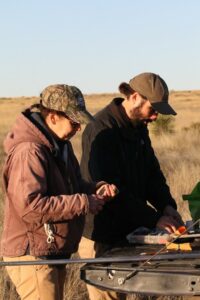
Authors Julie and Josh working on processing a bird. Photo by Will Britton
Julie Shieldcastle, when not working on bird field jobs lives in NW Ohio. She worked on migratory bird banding research east of the Mississippi for over 30 years and last year had the great opportunity to work for Bird Conservancy at Chico Basin Ranch.
Josh Lefever is a graduate of Penn State University, where he first learned how to band birds, and has been doing seasonal bird banding and survey work for Bird Conservancy since 2014. When not working on bird-related research projects, he enjoys traveling around the US to do more birding.


